“Furiosa” Art Director Jacinta Leong on Building Flying Motorcycles & That Breathtaking 15-Minute Action Sequence
Nine years after Mad Max: Fury Road star Charlize Theron wreaked havoc as bad-ass adult Furiosa, director George Miller revisits his post-apocalyptic nightmare with Furiosa: A Mad Max Saga (in theaters now). The prequel, starring Anya Taylor-Joy, Chris Hemsworth, and the mighty first-generation War Rig truck, features one of the year’s most spellbinding action sequences, a relentless, 15-minute mind-melter that took 78 days to film.
While the 15-minute sequence is the most thrilling action scene of the year (in any film), it’s but one of several hyper-violent set pieces set against a backdrop of desolate settlements. Helping Miller bring the world into focus is art director Jacinta Leong (The Great Gatsby, Alien: Covenant, Fury Road), who worked with production designer Colin Gibson on Furiosa for three years to modify the Australian desert into the near-future hellscape that forces young Furiosa to become a warrior.
Speaking from Melbourne, Leong talks to The Credits about how the real world informed Furiosa‘s scarcity-ravaged fantasyland.
How did your experience on Fury Road prepare you for Furiosa?
In some ways, it gave me a head start on the way George Miller works. Also, we wanted to create continuity, so with the War Rig for example, we literally used the same tanker from Fury Road
The tanker was still around?
We took it out of storage from Bathurst, where it had been sitting for ten years, and used that chassis and structure for the War Rig. It saved us some time and money – – what’s not to like? In Furiosa, they make things by reusing and recycling; we did that in the movie!
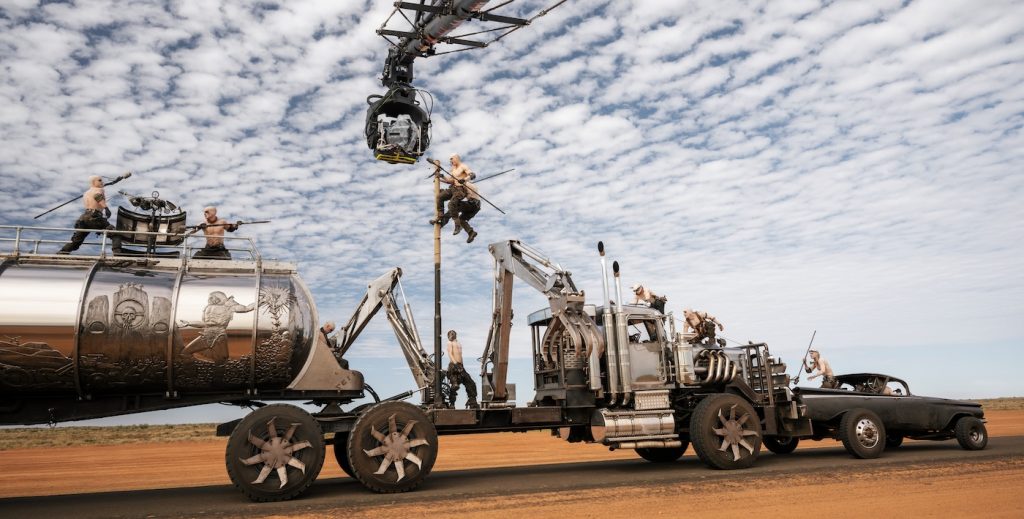
The War Rig truck stars in this huge chase sequence on a desert highway where the driver, Praetorian Jack (Tom Burke), and stowaway Furiosa, hiding under the truck, get attacked again by men on flying motorcycles. How did you contribute to that sequence?
In general, the production designer is the what, and the art director is the how. Colin is different in that he does both. [For the War Rig] myself and our set designer, Jemma Awad, did the drawings of this amazing machine for the stowaway sequence and drafted construction drawings so the mechanics could build this fully defensive vehicle, with harpoons at the top of the tank, a pair of excavator arms, a “Bommy knocker” at the back with the spinning cones and sharp spikes and mace balls.
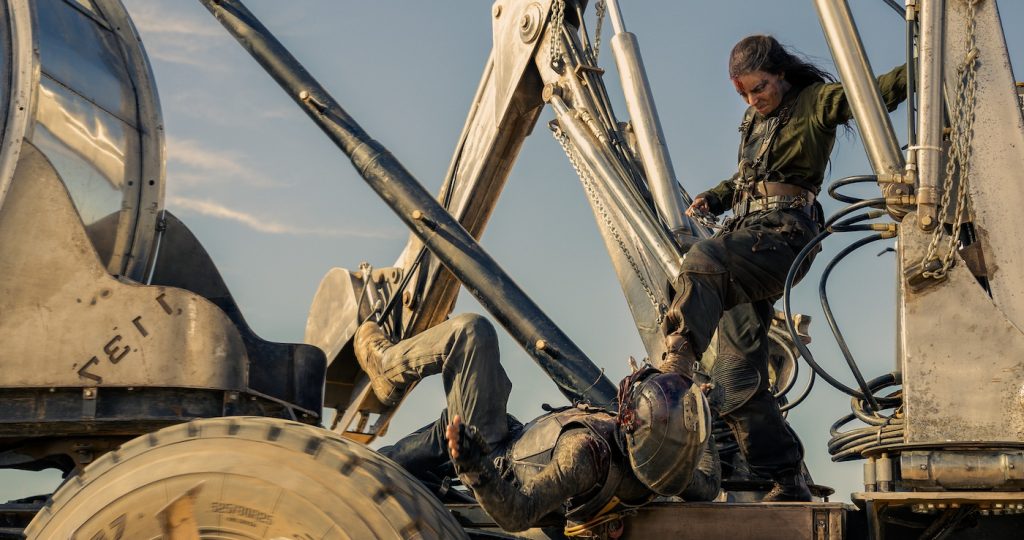
And then where did the model go from there?
I sent the model of the vehicle to action designer Guy Norris and his stunt team so they could import it into their pre-vis and flesh out the sequence that way.
Did you have references in mind for this “stowaway” set piece?
We’d refer to the [1939 John Ford-directed] movie Stagecoach as a foundational set piece because everything happens in, close to, and around it. Those Old Hollywood images have a Western element and helped get us to the heart of the sequence.
The motorcyclists who attack the War Rig are relentless and ingenious.
It’s a next-level attack. In Fury Road, they had the pole attacks, [going back and forth] like metronomes, so attacks from the air are one of the dimensions of Mad Max warfare. Here we had what we called Mortiflyers that used paragliders. Someone demonstrated a paraglider in a studio lying on the ground with all the cords, and he only ran about ten meters before it lifted him up.
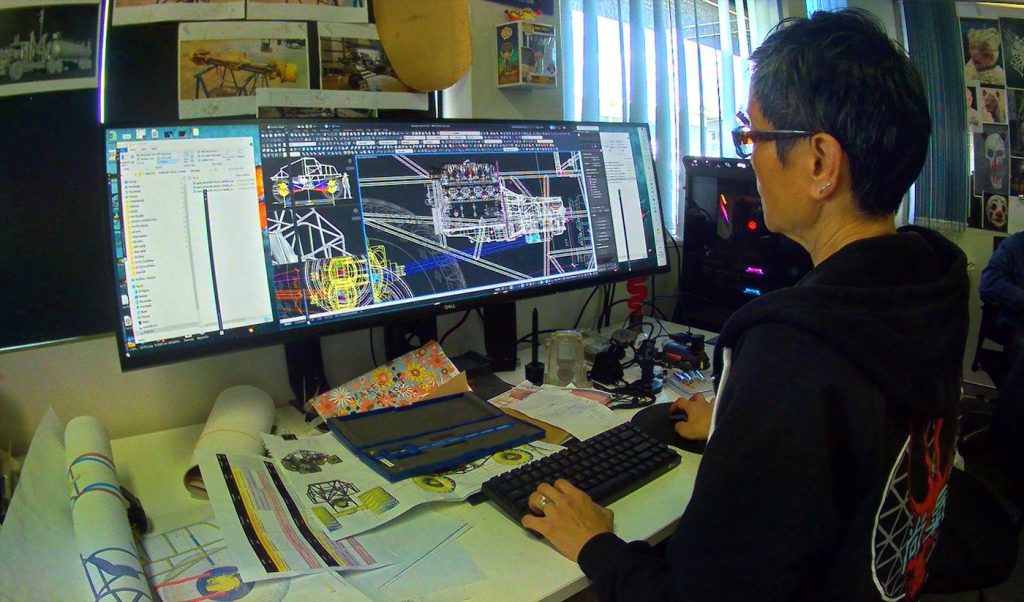
So it’s actually feasible that your “Mortiflyers” could become airborne in the real world.
Yeah. Colin and I like to embed reality into these stories because if it doesn’t work, if it looks wrong, the audience may not buy it, and then you’ve lost.
Motorcycles play a big role for many of the survivalists of Furiosa.
Just like in our real world, we have punks and goths and country western people, well we have different groups, and motorcycles became a way for us to define and identify these groups. The Militia tribe had Harley-Davidsons and police bikes. For the Toe Jammers, which we also called roo-billies, the motorcycles were dressed appropriately. For the Mortiflyers, some of their motorcycles had bird head sculptures of reused metal objects and feathers of plastic.
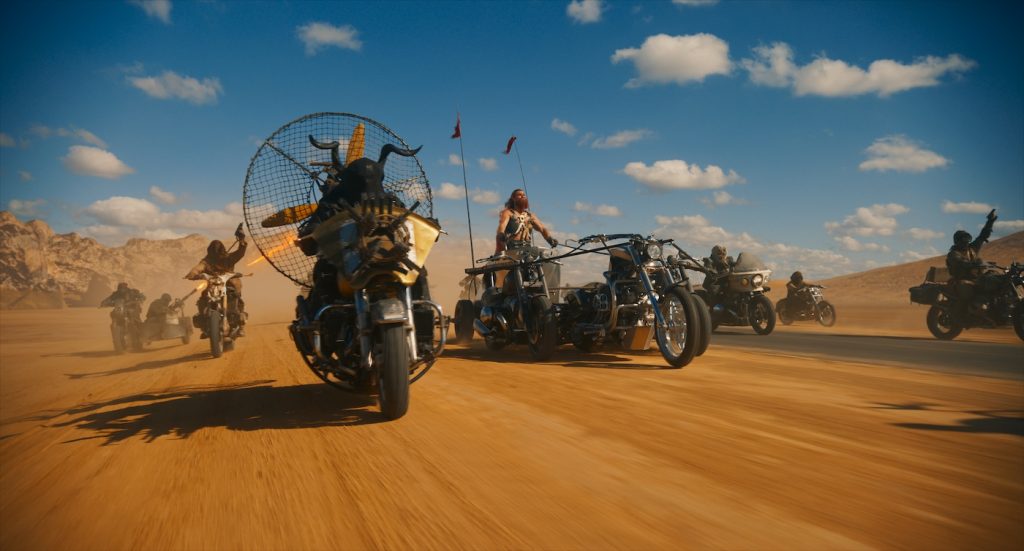
And Dementus rides around like a Roman gladiator on this motorcycle chariot, which is very cinematic.
One of the things we looked at was this 1937 Sydney police race.
Furiosa’s journey begins in the Wasteland Dementus and continues to The Citadel, Gas City, and Bullet Farm. How did you conceptualize each of these settlements?
The Citadel, established by George and Colin in Fury Road, is this rock formation where Immortan Joe pours water from his balcony. What we saw new in Furiosa was Rictus’ den. It’s naturally formed spaces made from erosion and lava, but they also carved some parts out as well. Our plasterers were very excited because we’d take a mold off real rocks and have them do a “squeeze,” we call it. That’s why they look so real: the geometry comes from nature.
Then there’s the grimly industrial Gas Town.
Gas Town is a sprawling infrastructure surrounded by a moat and a pair of gates. Its distilling tanks create fuel and oil. We visited the Qenos gas plant in Sydney and gained some inspiration from that.
What about Bullet Farm, which looks like an awful place to live?
We were inspired by the very dark, dehumanizing Brazilian goldmine, disused now, called Serra Pelade. We looked at incredible black and white photos of minters there, really deep down [in the earth] on rickety ladders. We found some images of dwellings carved out of the rocks, and you’ll see parts of caravan or corrugated iron stuck in the wall.
In contrast to the smooth digital technology seen in so much sci-fi, Furiosa features a lot of analog steampunk technology — gears, pulleys, and old-time instruments.
That’s one of the things that separates Furiosa from the slick CGI worlds. This is a harsh, unforgiving exterior [environment]. We got spools from telecommunication companies, which use them to lay cable. We procured six of those, cut them, and put the treads on them, so again, that’s reused in The Wasteland. We also used telescopes from the sixties, which gives you a more textured look. It wouldn’t look as good if we had used a modern telescope.
It seems that resource scarcity played a big role in defining a future world in which water, fuel, and food are in short supply.
Our design mantra is, “Everything has to be re-purposed, re-used again and again. For example, [early in the movie] young Furiosa reaches a truck with an excavator arm on it. That same excavator shows up on the War Rig years later. Another example is when Dementus hijacks a Citadel truck coming back from Gas Town and takes the hood off that Mack truck. Then we see it appear later on his six-tire monster track. The excavator arm, the hood of the truck, the war rig, the harpoon shield—there’s an economy to it.
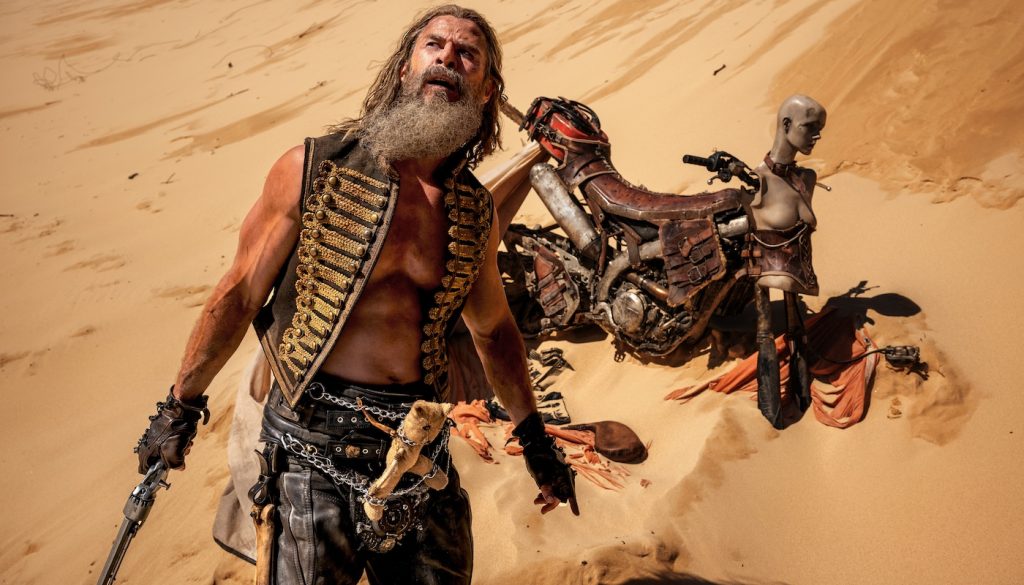
In his Mad Max movies, George Miller has told such an epic near-future saga that some might call him a visionary. What’s he like to work with?
He’s wonderful to work with. George can be very specific about things. It’s our job to bring ideas to him, and he always listens. When we present something, he’ll zoom in on some detail, like even the pipe on a motorcycle: He’ll go, ‘Can we just change it a little, the flow or the shape.’ Every week, we’d sit down in a group with George and Colin, our supervising art director, Sophie Nash, and art directors Laurie Faen and Nick Dare. I loved having those conversations. We all collaborated to bring things to the table.
For more on Furiosa, check out these stories:
“Furiosa” First Reactions Hail Another Super-Charged Stunner
Anya Taylor-Joy Forges Her Path in Explosive New “Furiosa” Trailer
Featured image: Caption: War Boys in Warner Bros. Pictures’ action adventure “FURIOSA: A MAD MAX SAGA,” a Warner Bros. Pictures release. Photo Credit: Jasin Boland



